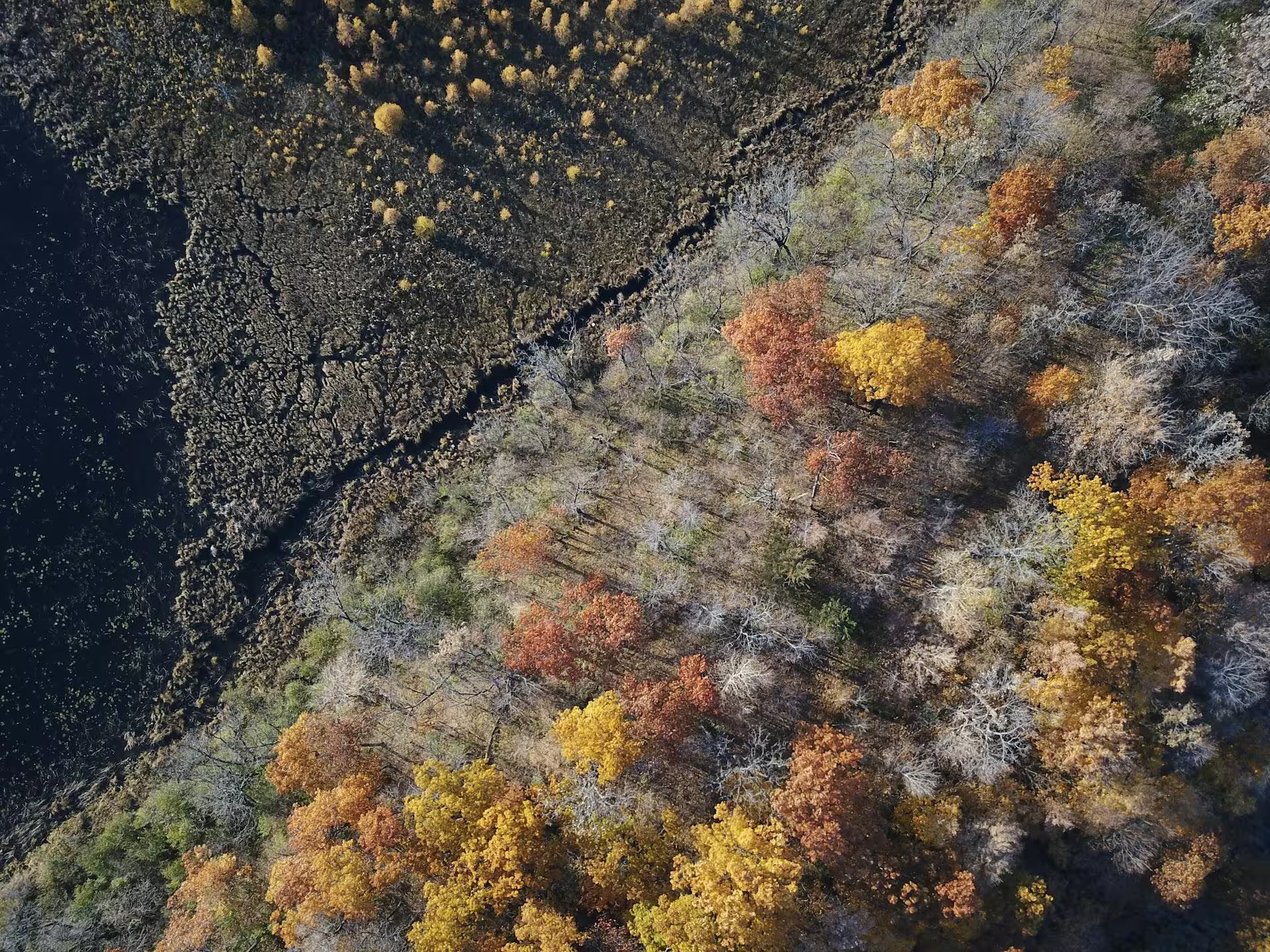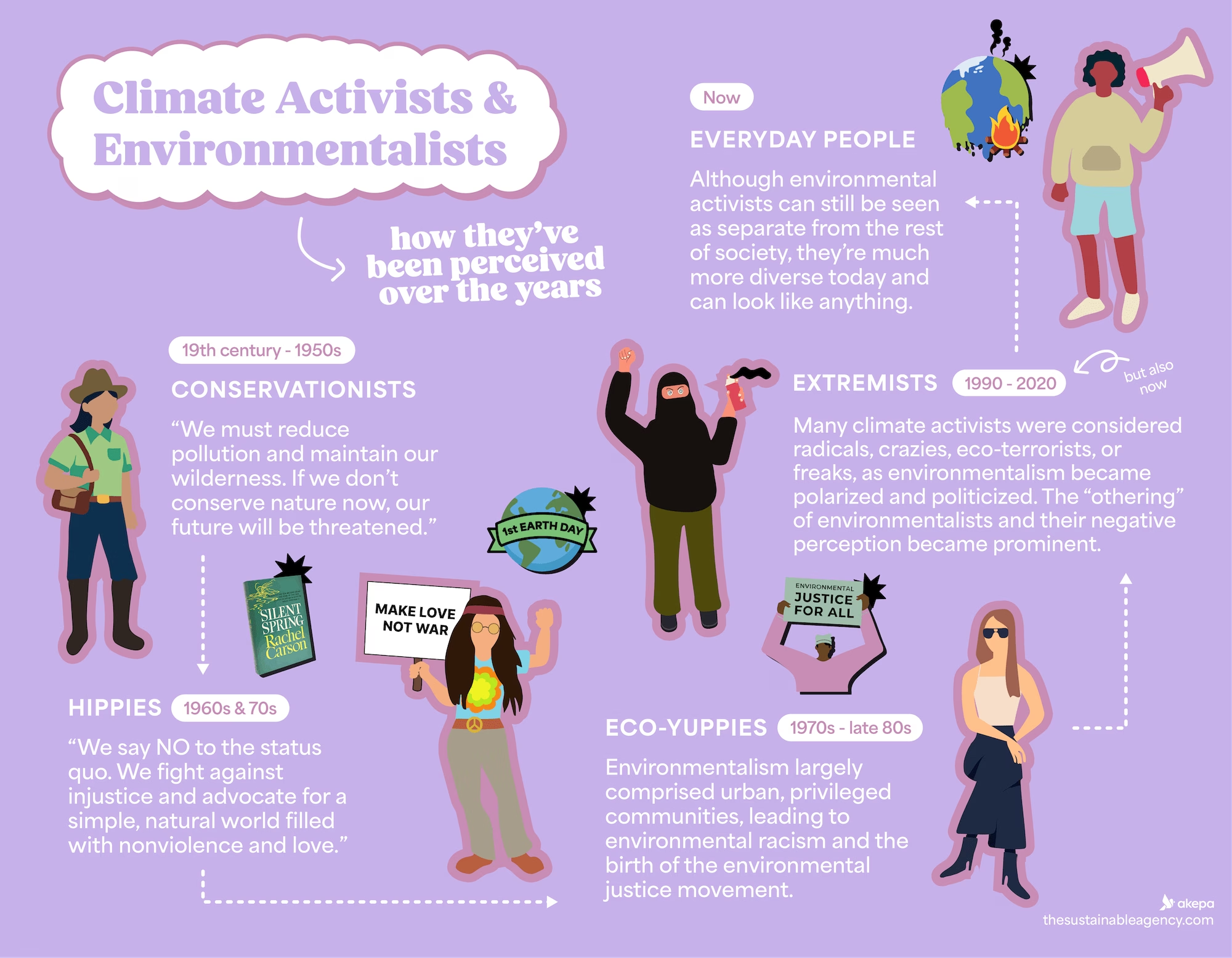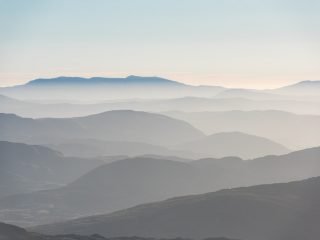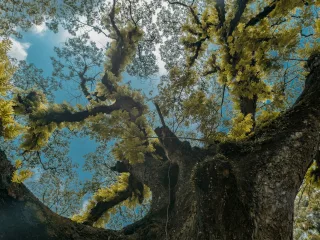What do today’s environmental activists look like to you? What words come to mind when you think of them? Studies show that environmental activists are often disliked and their social perception tends to be negative.
An environmental activist is described as someone who advocates for the protection of the natural world from destruction and pollution. That sounds like someone who cares about their surroundings and the well-being of people around them. Yet, this group tends to be singled out for a bit of a beef.
People have been discussing concern for environmental degradation caused by human activity for longer than we can imagine – as far back as 500 BC. But the first environmentalist groups were formed in the 19th century, so let’s look at how environmentalists have been perceived since then.
Disclaimer: Any historical recollection can be partly skewed with bias. It is extremely difficult to recount the full details of a historical event, a long-standing movement, or how people have been perceived over time. For this reason, we acknowledge that not everything in this article can be 100% objective.
19th century – 1950s
At this time, environmentalism was mainly linked to conserving nature and reducing pollution, and most environmentalists were considered conservationists. As the Industrial Revolution transformed and enhanced lives, progress came with caveats. CO2 emissions from fossil fuels started rising, air and water pollution were common in Europe, and deforestation led to environmental disasters.
In an 1835 essay called Nature, Ralph Waldo Emerson encouraged us to appreciate the natural world and limit human expansion into the wilderness. George Perkins Marsh, author of Man and Nature, denounced humanity’s indiscriminate warfare against wilderness and predicted humanity’s extinction due to our interventions on the natural environment. Concerned citizens formed environmental groups, mainly for wildlife conservation, such as the Sierra Club in 1892.
Scientific experts, urban reformers, women’s groups, and others warned that natural resources were being destroyed, pollution was crowding the air, sewage was filling the waterways, and feared the dirty industrialization of Earth’s natural beauty.
1960s & 1970s
In 1962, the book The Silent Spring by Rachel Carson was released and influenced many to become active environmentalists. The environmental movement in this era came alongside a larger cultural movement questioning the status quo. Many environmentalists were labeled ‘hippies’ as they rejected established institutions, criticized the middle class, and were involved in other political causes. Environmentalism in the 1960s was characterized by a big counterculture movement.
1970s & 1980s
As environmentalism became widespread and institutionalized, the environmental movement started to be considered ‘mainstream’. Yet, it was largely focused on the impacts of environmental degradation on privileged communities. The major environmental groups had an agenda that put little emphasis on social and economic inequality. It was criticized for being too focused on beautiful scenery and charismatic species. The movement missed the disproportionate impact of pollution on Latino, black, Native American, and low-income communities. In a way, and in the spirit of the times, it had an almost yuppie edge.
It wasn’t until 1982 when thousands of toxic soil was dumped in an African American neighborhood in North Carolina that the realities of marginalized communities experiencing greater environmental issues were noticed. So the environmental justice movement was born.
1990s – 2020s
Not that long ago, environmentalism was intensely polarized and politicized. A partisan divide was riven in the media on climate change, with many environmentalists being considered radical, extreme, or even perceived as threats. This “othering” of climate activists isn’t new but is more prominent now.
Both alternative and mainstream media featured news stories with headlines containing anti-climate activism narratives, with words such as “idiots”, “crazies”, and “freaks”. This portrayal of environmentalists could stem from devious strategies, like a decade-old 1998 strategy by Big Oil when a trade association published an action plan aimed at exploiting the uncertainties in climate science. The plan, developed by Exxon, Chevron, Southern Company, and other organizations stated that victory will be achieved when those promoting the Kyoto treaty on the basis of existent science appear to be out of touch with reality.
Reflecting on the polarization, some of the most known environmental activists such as Greta Thunberg face hatred and being called extremists, while also being seen as role models, heroic, and inspirational.
Now
Over the last few years, environmentalism has become a little less divisive and more mainstream – or at least, environmental awareness and concern are ubiquitous. In a 2024 survey which statistically represents 87% of the world’s population, 56% said they were thinking about climate change daily or weekly and 53% were more worried in 2024 than the previous year.
In some ways, environmentalism has grown to be more intersectional and inclusive than before. What constitutes an environmental group today is diverse and can look like anything. Most of us can also agree that the world’s truest environmentalists are (and always have been) Indigenous people, who protect the Earth’s resources better than anyone else and who we are continuously learning from.
Still, impactful environmental activism is still seen as something radical and separate from the rest of society. Environmentalism and environmental activism are still polarized. Indigenous people are marginalized and their rights are routinely violated. Land and environmental defenders around the world are killed for protecting the planet. Street activists are arrested for non-violent action, even in the most ‘progressive’ Western cities.
Although half of the world is concerned about climate change, climate change is getting worse. There’s a disconnect between what people say their morals and values are and their behavior. Could that be because environmental activism is still seen as something so marginal? The word ‘activist’ still carries a pejorative ring.
Future
Let’s be honest, despite the superficial progress from incessant COPs and pledges aiming at 2050 – the planet is still facing existential threats. Or rather, the people on it are – despite the denialism of many. As that happens, and more natural disasters sadly occur, and more pledges are rerouted by economics – we’d argue that the environmentalist (or you could say the activist) is going to continue on the trend of becoming even more normal. We’ll all be environmentalists soon.
At Akepa, we’d like to think we’re a little ahead of that curve by helping sustainable brands to grow and succeed. If you’d like to get some help from a team that cares just as much about the planet as you do, then get in touch.




Leave a Reply